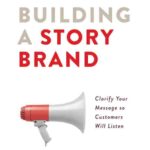When I work with entrepreneurs, I often find they can articulate their business model with confidence. They know their customers, the problem they solve, how they deliver their product or service, and the channels they use to reach the market. That’s important—crucial, even—because your business model is what allows you to create value for others.
But then I ask about their economic model, and suddenly the room gets quiet.
Here’s the truth: you need both. A solid business model without a clear economic model is like a beautiful car with no engine. It might look impressive, but it’s not going anywhere fast—or at least not profitably.
Let’s define the difference clearly:
- Business Model = How You Create and Deliver Value to Customers
- Economic Model = How You Capture Value for the Business and Its Owner(s)
Both are essential. One is customer-facing. The other is owner/investor-facing. Together, they form the full foundation for a successful business.
What Is a Business Model?
Your business model outlines how your company creates value in the marketplace. It answers key questions like:
- Who are your customers?
- What problems are you solving?
- How do you reach your customers?
- What value do you deliver, and through what channels?
- What is your pricing structure?
- What kind of relationship do you have with your customers?
Whether you use the Business Model Canvas or another framework, the goal is to understand the mechanics of customer acquisition, delivery, and retention. It’s the part of your business that your customers see and experience.
Example: Amazon and Wal-Mart both share a similar business model: offer a broad selection of goods at competitive prices. The value proposition centers on low-cost convenience.
But that’s only part of the story.
What Is an Economic Model?
Your economic model focuses on how the business actually makes money—how the gears turn behind the scenes. It includes:
- Revenue drivers (e.g., sales, subscriptions, upsells)
- Cost structure (fixed and variable costs)
- Margins (gross, operating, and net profit)
- Operating leverage (how much more profit can be made without proportionally increasing costs?)
Related Post: Why You Need To Know How Your Economic Model Drives Profit
The economic model helps answer the question: “How do we get paid in a way that allows us to be sustainable, profitable, and scalable?”
Returning to our earlier example:
- Wal-Mart relies on scale, high inventory turnover, and cost control in physical stores.
- Amazon leverages a capital-light model with automation, cloud computing (AWS), and third-party sellers.
Their business models are similar in what they offer to customers. Their economic models differ in how they make it profitable.
Why You Need to Understand Both
Many entrepreneurs become obsessed with their product or customer experience, and rightfully so. If you can’t make customers happy, your business won’t last.
But a business that delights customers and doesn’t make money is just a hobby. Conversely, a highly efficient money-making operation that doesn’t serve anyone well is destined to fizzle out.
You need both models to answer:
- How do we serve customers? → Business Model
- How do we serve ourselves? → Economic Model
And the relationship between the two is dynamic. Your business model influences the economic model—and vice versa. For instance, a high-touch, personalized service (business model) typically comes with higher delivery costs (economic model), which may limit margins and scalability.
Your business model ensures you are solving the right problem for the right audience. Your economic model ensures you are doing it in a way that sustains and rewards your efforts. One without the other is incomplete. The synergy between them is what leads to long-term success.
Do you differentiate your business model from your economic model?












